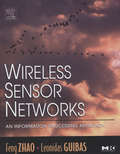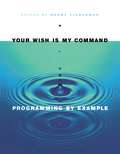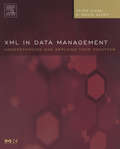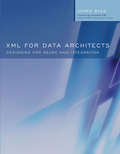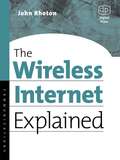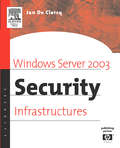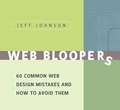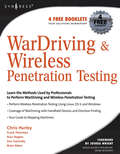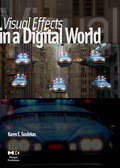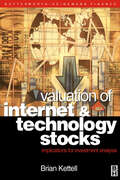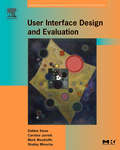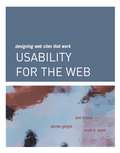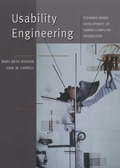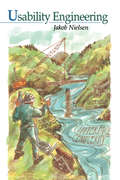- Table View
- List View
See MIPS Run (ISSN)
by Dominic SweetmanSee MIPS Run, Second Edition, is not only a thorough update of the first edition, it is also a marriage of the best-known RISC architecture--MIPS--with the best-known open-source OS--Linux. The first part of the book begins with MIPS design principles and then describes the MIPS instruction set and programmers’ resources. It uses the MIPS32 standard as a baseline (the 1st edition used the R3000) from which to compare all other versions of the architecture and assumes that MIPS64 is the main option. The second part is a significant change from the first edition. It provides concrete examples of operating system low level code, by using Linux as the example operating system. It describes how Linux is built on the foundations the MIPS hardware provides and summarizes the Linux application environment, describing the libraries, kernel device-drivers and CPU-specific code. It then digs deep into application code and library support, protection and memory management, interrupts in the Linux kernel and multiprocessor Linux. Sweetman has revised his best-selling MIPS bible for MIPS programmers, embedded systems designers, developers and programmers, who need an in-depth understanding of the MIPS architecture and specific guidance for writing software for MIPS-based systems, which are increasingly Linux-based.Completely new material offers the best explanation available on how Linux runs on real hardwareProvides a complete, updated and easy-to-use guide to the MIPS instruction set using the MIPS32 standard as the baseline architecture with the MIPS64 as the main optionRetains the same engaging writing style that made the first edition so readable, reflecting the authors 20+ years experience in designing systems based on the MIPS architecture
Oracle Database Programming using Java and Web Services
by Kuassi MensahThe traditional division of labor between the database (which only stores and manages SQL and XML data for fast, easy data search and retrieval) and the application server (which runs application or business logic, and presentation logic) is obsolete. Although the books primary focus is on programming the Oracle Database, the concepts and techniques provided apply to most RDBMS that support Java including Oracle, DB2, Sybase, MySQL, and PostgreSQL. This is the first book to cover new Java, JDBC, SQLJ, JPublisher and Web Services features in Oracle Database 10g Release 2 (the coverage starts with Oracle 9i Release 2). This book is a must-read for database developers audience (DBAs, database applications developers, data architects), Java developers (JDBC, SQLJ, J2EE, and OR Mapping frameworks), and to the emerging Web Services assemblers.Describes pragmatic solutions, advanced database applications, as well as provision of a wealth of code samples.Addresses programming models which run within the database as well as programming models which run in middle-tier or client-tier against the database.Discusses languages for stored procedures: when to use proprietary languages such as PL/SQL and when to use standard languages such as Java; also running non-Java scripting languages in the database.Describes the Java runtime in the Oracle database 10g (i.e., OracleJVM), its architecture, memory management, security management, threading, Java execution, the Native Compiler (i.e., NCOMP), how to make Java known to SQL and PL/SQL, data types mapping, how to call-out to external Web components, EJB components, ERP frameworks, and external databases.Describes JDBC programming and the new Oracle JDBC 10g features, its advanced connection services (pooling, failover, load-balancing, and the fast database event notification mechanism) for clustered databases (RAC) in Grid environments.Describes SQLJ programming and the latest Oracle SQLJ 10g features , contrasting it with JDBC.Describes the latest Database Web services features, Web services concepts and Services Oriented Architecture (SOA) for DBA, the database as Web services provider and the database as Web services consumer.Abridged coverage of JPublisher 10g, a versatile complement to JDBC, SQLJ and Database Web Services.
Fast SOA: The way to use native XML technology to achieve Service Oriented Architecture governance, scalability, and performance (The Morgan Kaufmann Series in Data Management Systems)
by Frank CohenFast SOA teaches readers how to apply native XML technology to SOA. This book discusses applications in data mediation using mid-tier data and service caching to handle the explosion of new schemas and new devices in an ever changing environment; data aggregation in the SOA middle-tier for off-line browsing, service acceleration through mid-tier caching and transformation, and bandwidth-needs reduction; increased service and application scalability and performance; successful evaluations of application server, XML parser, relational and native XML database, Enterprise Service Bus, Business Integration server, workflow server, and Web Service tools for performance, scalability, and developer productivity; improved service governance through XML persistence in SOA registries and repositories; and composite data services (CDS) to provide maximum reuse of software components and data, accelerate performance, and reduce development time and maintenance in your SOA. This book is recommended for software and data architects, IT application developers, and IT managers who are developing the next generation of web services and service oriented architectures.Data mediation using mid-tier data and service caching to handle the explosion of new schemas and new devices in an ever changing environmentData aggregation in the SOA middle-tier for off-line browsing, service acceleration through mid-tier caching and transformation, and bandwidth-needs reductionIncreased service and application scalability and performanceSuccessful evaluations of application server, XML parser, relational and native XML database, Enterprise Service Bus, Business Integration server, workflow server, and Web Service tools for performance, scalability, and developer productivityImproved service governance through XML persistence in SOA registries and repositoriesComposite data services (CDS) to provide maximum reuse of software components and data, accelerate performance, and reduce development time and maintenance in your SOA
Wireless Sensor Networks: An Information Processing Approach (ISSN)
by Feng Zhao Leonidas GuibasInformation processing in sensor networks is a rapidly emerging area of computer science and electrical engineering research. Because of advances in micro-sensors, wireless networking and embedded processing, ad hoc networks of sensor are becoming increasingly available for commercial, military, and homeland security applications. Examples include monitoring (e.g., traffic, habitat, security), industrail sensing and diagnostics (e.g., factory, appliances), infrastructures (i.e., power grid, water distribution, waste disposal) and battle awareness (e.g., multi-target tracking). This book introduces practitioners to the fundamental issues and technology constraints concerning various aspects of sensor networks such as information organization, querying, routing, and self-organization using concrete examples and does so by using concrete examples from current research and implementation efforts.Written for practitioners, researchers, and students and relevant to all application areas, including environmental monitoring, industrial sensing and diagnostics, automotive and transportation, security and surveillance, military and battlefield uses, and large-scale infrastructural maintenanceSkillfully integrates the many disciplines at work in wireless sensor network design: signal processing and estimation, communication theory and protocols, distributed algorithms and databases, probabilistic reasoning, energy-aware computing, design methodologies, evaluation metrics, and moreDemonstrates how querying, data routing, and network self-organization can support high-level information-processing tasks
The Grid 2: Blueprint for a New Computing Infrastructure (ISSN)
by Ian Foster Carl Kesselman"The Grid is an emerging infrastructure that will fundamentally change the way we think about-and use-computing. The word Grid is used by analogy with the electric power grid, which provides pervasive access to electricity and has had a dramatic impact on human capabilities and society. Many believe that by allowing all components of our information technology infrastructure-computational capabilities, databases, sensors, and people-to be shared flexibly as true collaborative tools the Grid will have a similar transforming effect, allowing new classes of applications to emerge." --From the Preface In 1998, Ian Foster and Carl Kesselman introduced a whole new concept in computing with the first edition of this book. Today there is a broader and deeper understanding of the nature of the opportunities offered by Grid computing and the technologies needed to realize those opportunities. In Grid 2, the editors reveal the revolutionary impact of large-scale resource sharing and virtualization within science and industry, the intimate relationships between organization and resource sharing structures and the new technologies required to enable secure, reliable, and efficient resource sharing on large scale. Foster and Kesselman have once again assembled a team of experts to present an up-to-date view of Grids that reports on real experiences and explains the available technologies and new technologies emerging from labs, companies and standards bodies. Grid 2, like its predecessor, serves as a manifesto, design blueprint, user guide and research agenda for future Grid systems.30 chapters including more than a dozen completely new chaptersWeb access to 13 unchanged chapters from the first editionThree personal essays by influential thinkers on the significance of Grids from the perspectives of infrastructure, industry, and scienceA foundational overview of the central Grid concepts and architectural principlesTwelve application vignettes showcase working Grids in science, engineering, industry, and commerceDetailed discussions of core architecture and services, data and knowledge management, and higher-level toolsFocused presentations on production Grid deployment, computing platforms, peer-to-peer technologies, and network infrastructuresExtensive bibliography and glossary
Your Wish is My Command: Programming By Example (Interactive Technologies)
by Henry LiebermanAs user interface designers, software developers, and yes-as users, we all know the frustration that comes with using "one size fits all" software from off the shelf. Repeating the same commands over and over again, putting up with an unfriendly graphical interface, being unable to program a new application that you thought of yourself-these are all common complaints. The inflexibility of today's computer interfaces makes many people feel like they are slaves to their computers. Shouldn't it be the other way around? Why can't technology give us more "custom-fitting" software?On the horizon is a new technology that promises to give ordinary users the power to create and modify their own programs. Programming by example (PBE) is a technique in which a software agent records a user's behavior in an interactive graphical interface, then automatically writes a program that will perform that behavior for the user.Your Wish is My Command: Programming by Example takes a broad look at this new technology. In these nineteen chapters, programming experts describe implemented systems showing that PBE can work in a wide variety of application fields. They include the following:The renowned authors and their editor believe that PBE will some day make it possible for interfaces to effectively say to the user, "Your wish is my command!"Text and graphical editingWeb browsingComputer-aided designTeaching programming to childrenProgramming computer gamesGeographical information systems
XML in Data Management: Understanding and Applying Them Together (The Morgan Kaufmann Series in Data Management Systems)
by Peter Aiken M. David AllenXML in Data Management is for IT managers and technical staff involved in the creation, administration, or maintenance of a data management infrastructure that includes XML. For most IT staff, XML is either just a buzzword that is ignored or a silver bullet to be used in every nook and cranny of their organization. The truth is in between the two. This book provides the guidance necessary for data managers to make measured decisions about XML within their organizations. Readers will understand the uses of XML, its component architecture, its strategic implications, and how these apply to data management.Takes a data-centric view of XMLExplains how, when, and why to apply XML to data management systemsCovers XML component architecture, data engineering, frameworks, metadata, legacy systems, and moreDiscusses the various strengths and weaknesses of XML technologies in the context of organizational data management and integration
XML for Data Architects: Designing for Reuse and Integration (The Morgan Kaufmann Series in Data Management Systems)
by James Bean"The book addresses a sorely missing set of considerations in the real world... This is a very timely book."-Peter Herzum, author of Business Component Factory and CEO of Herzum SoftwareXML is a tremendous enabler for platform agnostic data and metadata exchanges. However, there are no clear processes and techniques specifically focused on the engineering of XML structures to support reuse and integration simplicity, which are of particular importance in the age of application integration and Web services. This book describes the challenges of using XML in a manner that promotes simplification of integration, and a high degree of schema reuse. It also describes the syntactical capabilities of XML and XML Schemas, and the similarities (and in some cases limitations) of XML DTDs. This book presents combinations of architectural and design approaches to using XML as well as numerous syntactical and working examples.* Designed to be read three different ways: skim the margin notes for quick information, or use tables in the appendix to locate sections relevant the to a particular issue, or read cover-to-cover for the in-depth treatment. * Contains numerous tables that describe datatypes supported by the most common DBMSs and map to XML Schema supported data types.* Unique focus on the value added role and processes of the data architect as they apply to enterprise use of XML.
Wireless Operational Security
by John Rittinghouse, PhD, CISM James F. Ransome, PhD, CISM, CISSPThis comprehensive wireless network book addresses the operational and day-to-day security management requirements of 21st century companies. Wireless networks can easily be reconfigured, are very mobile, allow for potentially nonstop exposure, and require the level of security be scrutinized even more than for wired networks. This includes inherent security flaws in various wireless architectures that result in additional risks to otherwise secure converged wired networks. An even worse scenario is one where an insecure wireless network is connected to a weakly secured or insecure wired network and the wireless subnet is not separated from the wired subnet. There are approximately a dozen popular books that cover components of the architecture, design, theory, issues, challenges, and recommended policies for wireless security, none of which address them in a practical, operationally-oriented and comprehensive way. Wireless Operational Security bridges this gap.*Presents a new "WISDOM" model for Wireless Security Infrastructures*Acts as a critical guide to implementing "Converged Networks" wired/wireless with all necessary security considerations*Rittinghouse's Cybersecurity Operations Handbook is the only security book recommended by the FCC
The Wireless Internet Explained (HP Technologies)
by John RhotonThe Wireless Internet Explained covers the full spectrum of wireless technologies from a wide range of vendors, including initiatives by Microsoft and Compaq. The Wireless Internet Explained takes a practical look at wireless technology. Rhoton explains the concepts behind the physics, and provides an overview that clarifies the convoluted set of standards heaped together under the umbrella of wireless. It then expands on these technical foundations to give a panorama of the increasingly crowded landscape of wireless product offerings. When it comes to actual implementation the book gives abundant down-to-earth advice on topics ranging from the selection and deployment of mobile devices to the extremely sensitive subject of security. Written by an expert on Internet messaging, the author of Digital Press's successful Programmer's Guide to Internet Mail and X.400 and SMTP: Battle of the E-mail Protocols, The Wireless Internet Explained describes and evaluates the current state of the fast-growing and crucial field of wireless communications.Covers phone-based systems, PDAs and the wireless office Describes and evaluates the current state of the fast- growing and crucial field of wireless communications
Windows Server 2003 Security Infrastructures: Core Security Features (HP Technologies)
by Jan De ClercqWindows Server 2003 Security Infrastructures is a must for anyone that wants to know the nuts and bolts of Windows Server 2003 security and wants to leverage the operating system's security infrastructure components to build a more secure I.T. infrastructure. The primary goal of this book is to provide insights into the security features and technologies of the Windows Server 2003 operating system. It also highlights the security principles an architect should remember when designing an infrastructure that is rooted on the Windows Server 2003 OS.*Explains nuts and bolts of Windows Server 2003 security*Provides practical insights into how to deploy and administer secure Windows Server 2003 infrastructures*Draws on the experience of a lead consultant in the Microsoft security area
Web Services: Theory and Practice
by Anura GurugeThis is a soup-to-nuts reference guide on all aspects of Web Services - where Web Services is a fast emerging set of Internet-specific middleware technology to further promote the growth of all aspects of e-business via standardization, collaboration and "franchising." This book is best characterized as an executive brief for IT and senior management rather than a nuts-and-bolts technical guide for portal implementers. Think of it as the "Cliffs Notes on Web Services." Given this audience, the book consistently focuses on business needs, value propositions, ROI, proven solutions and actual examples of current implementations. Each chapter also ends with a 10-item "Q&A" section that consolidates and summarizes the information discussed in the chapter. The book is illustrated with detailed technical diagrams, includes lots of arresting subtitles and contains many bullet lists and tables to facilitate (and encourage) productive skimming. Decision makers - the intended readership for this book - gain increasing comfort and confidence as they get into the book that they are getting to see all facets of the issues, on a consistent basis, and that they will not be blind-sided at meetings by people asking 'difficult' questions. At the end of each chapter, Guruge summarizes and reinforces key points, allowing the reader to skim through the topics for crucial information. The book also leverages living outside resources and ensures that the readership always has ready and consistent access to any and all terms, definitions and concepts they might not be familiar with."Debate style" presentation, focusing repeatedly on pros-and-cons, e.g., .NET vs. Java, open vs. proprietary and buy vs. buildAuthor's trademark detailed architectural and network diagrams of portal implementationsQ&A section at end of each chapter
Web Services, Service-Oriented Architectures, and Cloud Computing (The Savvy Manager's Guides)
by Douglas K. BarryWeb services are leading to the use of more packaged software either as an internal service or an external service available over the Internet. These services, which will be connected together to create the information technology systems of the future, will require less custom software in our organizations and more creativity in the connections between the services. This book begins with a high-level example of how an average person in an organization might interact with a service-oriented architecture. As the book progresses, more technical detail is added in a "peeling of the onion" approach. The leadership opportunities within these developing service-oriented architectures are also explained. At the end of the book there is a compendium or "pocket library" for software technology related to service-oriented architectures.· Only web services book to cover both data management and software engineering perspectives, excellent resource for ALL members of IT teams· Jargon free, highly illustrated, with introduction that anyone can read that then leads into increasing technical detail· Provides a set of leadership principles and suggested application for using this technology.
Web Bloopers: 60 Common Web Design Mistakes, and How to Avoid Them (Interactive Technologies)
by Jeff JohnsonThe dot.com crash of 2000 was a wake-up call, and told us that the Web has far to go before achieving the acceptance predicted for it in '95. A large part of what is missing is quality; a primary component of the missing quality is usability. The Web is not nearly as easy to use as it needs to be for the average person to rely on it for everyday information, commerce, and entertainment.In response to strong feedback from readers of GUI BLOOPERS calling for a book devoted exclusively to Web design bloopers, Jeff Johnson calls attention to the most frequently occurring and annoying design bloopers from real web sites he has worked on or researched. Not just a critique of these bloopers and their sites, this book shows how to correct or avoid the blooper and gives a detailed analysis of each design problem. Hear Jeff Johnson's interview podcast on software and website usability at the University of Canterbury (25 min.)Discusses in detail 60 of the most common and critical web design mistakes, along with the solutions, challenges, and tradeoffs associated with them. Covers important subject areas such as: content, task-support, navigation, forms, searches, writing, link appearance, and graphic design and layout. Organized and formatted based on the results of its own usability test performed by web designers themselves.Features its own web site (www.web-bloopers.com)with new and emerging web design no-no's (because new bloopers are born every day) along with a much requested printable blooper checklist for web designers and developers to use.
WarDriving and Wireless Penetration Testing
by Frank Thornton Brian Baker Chris Hurley Russ RogersWireless networking has become standard in many business and government networks. This book is the first book that focuses on the methods used by professionals to perform WarDriving and wireless pentration testing.Unlike other wireless networking and security books that have been published in recent years, this book is geared primarily to those individuals that are tasked with performing penetration testing on wireless networks. This book continues in the successful vein of books for penetration testers such as Google Hacking for Penetration Testers and Penetration Tester’s Open Source Toolkit. Additionally, the methods discussed will prove invaluable for network administrators tasked with securing wireless networks. By understanding the methods used by penetration testers and attackers in general, these administrators can better define the strategies needed to secure their networks.* According to a study by the Strategis Group more than one third of the words population will own a wireless device by the end of 2008. * The authors have performed hundreds of wireless penetration tests, modeling their attack methods after those used by real world attackers. * Unlike other wireless books, this is geared specifically for those individuals that perform security assessments and penetration tests on wireless networks.
Visual Effects in a Digital World: A Comprehensive Glossary of over 7000 Visual Effects Terms (The Morgan Kaufmann Series in Computer Graphics)
by Karen GoulekasAs the visual effects industry has diversified, so too have the books written to serve the needs of this industry. Today there are hundreds of highly specialized titles focusing on particular aspects of film and broadcast animation, computer graphics, stage photography, miniature photography, color theory, and many others. Visual Effects in a Digital World offers a much-needed reconsolidation of this knowledge. All of the industry's workers frequently need to understand concepts from other specialties, and this book-the only one of its kind-lets them look up and grasp the basics of any visual effects concept in a matter of seconds. It's a great way for everyone, regardless of experience, to find their way through the jargon and learn what they need to know.Authoritative coverage from a winner visual effects expert-winner of a British Academy Award and two EmmysCovers topics such as computer graphics, digital compositing, live action, stage, and miniature photography, and a wide range of computer and Internet conceptsOffers job descriptions for positions found throughout the industryDemystifies the jargon used by practitioners in every subspecialty
Virtualization with Microsoft Virtual Server 2005
by Andy Jones Rogier Dittner David Rule Jr. Ken Majors Aaron Tiensivu Twan Grotenhuis Geoffrey GreenA virtual evolution in IT shops large and small has begun. Microsoft's Virtal Server is the enterprise tool to free an infrastructure from its physical limitations providing the transformation into a virtual environment--this book shows you how.This book will detail the default and custom installation of Microsoft's Virtual Server 2005, as well as basic and advanced virtual machine configurations. It will also discuss the requirements for a server virtualization and consolidation project and the cost savings surrounding such an effort. Furthermore, the book will provide a thorough understanding of the benefits of a virtual infrastructure and a comprehensive examination of how Virtual Server can ease administration and lower overall IT costs. Lastly, the book delivers a thorough understanding of the virtual evolution which is underway in many IT organizations and how the reader will benefit from shifting from the physical to a virtual world.* Examines in detail the default and custom installation of Microsoft's Virtual Server 2005* Addresses th important topics of server requirements and the cost implications involved* Looks at addressing IT costs and the benefits to the organisation
Valuation of Internet and Technology Stocks: Implications for Investment Analysis
by Brian KettellValuation of Internet and Technology Stocks offers practical information on how to value internet and high-tech companies more accurately. The book reviews previous practice, highlights the deficiencies in existing stock market techniques, and shows how to modify or replace them. It also demonstrates how the New Economics necessitates new forms of investment analysis. This book presents new ways of looking, researching and valuing internet and high-tech companies. It explains why there has been a high correlation between high loss companies and a rocketing stock price. It questions whether there is still a place for discounted cash flows when there is no cash flow to discount. It also considers what new methods are available to value super growth companies and whether these methods are any better than existing techniques. Chapters deal with a wide range of topics including: where technology/internet stocks fit in a new economy; how you value traditional common stocks; application of the Porter model to the valuation of technology/internet stocks; problems with applying traditional valuation models for technology/internet stocks; derivative markets and real options; and the lessons that can be learned by investors from the year 2000 collapse of technology/internet stocks. This text will be of interest to traders, investment managers, institutional investors, plan managers, and finance professionals.* Investigates why there has been a high correlation between high loss companies and a rocketing stock price* Questions whether there is still a place for discounted cash flows when there is no cash flow to discount* Considers what new methods are available to value super growth companies and whether these methods are any better than existing techniques
User Interface Design and Evaluation (Interactive Technologies)
by Debbie Stone Caroline Jarrett Mark Woodroffe Shailey MinochaUser Interface Design and Evaluation provides an overview of the user-centered design field. It illustrates the benefits of a user-centered approach to the design of software, computer systems, and websites. The book provides clear and practical discussions of requirements gathering, developing interaction design from user requirements, and user interface evaluation. The book's coverage includes established HCI topics—for example, visibility, affordance, feedback, metaphors, mental models, and the like—combined with practical guidelines for contemporary designs and current trends, which makes for a winning combination. It provides a clear presentation of ideas, illustrations of concepts, using real-world applications. This book will help readers develop all the skills necessary for iterative user-centered design, and provides a firm foundation for user interface design and evaluation on which to build. It is ideal for seasoned professionals in user interface design and usability engineering (looking for new tools with which to expand their knowledge); new people who enter the HCI field with no prior educational experience; and software developers, web application developers, and information appliance designers who need to know more about interaction design and evaluation.Co-published by the Open University, UK.Covers the design of graphical user interfaces, web sites, and interfaces for embedded systems.Full color production, with activities, projects, hundreds of illustrations, and industrial applications.
Usability for the Web: Designing Web Sites that Work (Interactive Technologies)
by Tom Brinck Darren Gergle Scott D. WoodEvery stage in the design of a new web site is an opportunity to meet or miss deadlines and budgetary goals. Every stage is an opportunity to boost or undercut the site's usability. Usability for the Web tells you how to design usable web sites in a systematic process applicable to almost any business need. You get practical advice on managing the project and incorporating usability principles from the project's inception. This systematic usability process for web design has been developed by the authors and proven again and again in their own successful businesses. A beacon in a sea of web design titles, this book treats web site usability as a preeminent, practical, and realizable business goal, not a buzzword or abstraction. The book is written for web designers and web project managers seeking a balance between usability goals and business concerns.Examines the entire spectrum of usability issues, including architecture, navigation, graphical presentation, and page structure.Explains clearly the steps relevant to incorporating usability into every stage of the web development process, from requirements to tasks analysis, prototyping and mockups, to user testing, revision, and even postlaunch evaluations.
Usability Engineering: Scenario-Based Development of Human-Computer Interaction (Interactive Technologies)
by John M. Carroll Mary Beth RossonYou don't need to be convinced. You know that usability is key to the success of any interactive system-from commercial software to B2B Web sites to handheld devices. But you need skills to make usability part of your product development equation. How will you assess your users' needs and preferences? How will you design effective solutions that are grounded in users' current practices? How will you evaluate and refine these designs to ensure a quality product? Usability Engineering: Scenario-Based Development of Human-Computer Interaction is a radical departure from traditional books that emphasize theory and address experts. This book focuses on the realities of product development, showing how user interaction scenarios can make usability practices an integral part of interactive system development. As you'll learn, usability engineering is not the application of inflexible rules; it's a process of analysis, prototyping, and problem solving in which you evaluate tradeoffs, make reasoned decisions, and maximize the overall value of your product.Written by prominent HCI educators who understand how to teach usability practices to students and professional developers.Interleaves HCI theory and concepts with a running case study demonstrating their application. Gradually elaborates the case study to introduce increasingly sophisticated usability engineering techniques.Analyzes usability issues in realistic scenarios that describe existing or envisioned systems from the perspective of one or more users.Emphasizes the real world of usability engineering-a world in which tradeoffs must be weighed and difficult decisions made to achieve desired results.
Usability Engineering (Interactive Technologies)
by Jakob NielsenWritten by the author of the best-selling HyperText & HyperMedia, this book is an excellent guide to the methods of usability engineering. The book provides the tools needed to avoid usability surprises and improve product quality. Step-by-step information on which method to use at various stages during the development lifecycle are included, along with detailed information on how to run a usability test and the unique issues relating to international usability.* Emphasizes cost-effective methods that developers can implement immediately* Instructs readers about which methods to use when, throughout the development lifecycle, which ultimately helps in cost-benefit analysis. * Shows readers how to avoid the four most frequently listed reasons for delay in software projects.* Includes detailed information on how to run a usability test.* Covers unique issues of international usability.* Features an extensive bibliography allowing readers to find additional information.* Written by an internationally renowned expert in the field and the author of the best-selling HyperText & HyperMedia.
UNIX for OpenVMS Users (HP Technologies)
by Philip Bourne Richard Holstein Joseph McMullenUNIX for OpenVMS Users, 3E, makes it easy to see what OpenVMS and UNIX have in common, and to transfer your knowledge and experience in OpenVMS over to the world of UNIX. Since most shops rely on more than one operating system, it is critical for system administrators and managers to understand the similarities and differences between platforms, so they can easily work in both environments while taking full advantage of the tools and applications available on each. This book offers OpenVMS professionals a concise source of information, so that they can quickly bring their expertise to bear on UNIX file management, e-mail, networking, and security. This new edition of the book is enhanced with updated references to VMS, incorporates suggestions made by readers of previous editions, and particularly, recognizes other UNIX implementations in addition to HP's Tru64.Includes extensive additions to the sections on VMS logical names, on the emacs editor, and on shell programming and PerlDescribes the interfaces common to both operating systems, with appendices covering command and editor summariesAdds emphasis on Linux
Unit Testing in Java: How Tests Drive the Code (The Morgan Kaufmann Series in Software Engineering and Programming)
by Johannes LinkSoftware testing is indispensable and is one of the most discussed topics in software development today. Many companies address this issue by assigning a dedicated software testing phase towards the end of their development cycle. However, quality cannot be tested into a buggy application. Early and continuous unit testing has been shown to be crucial for high quality software and low defect rates. Yet current books on testing ignore the developer's point of view and give little guidance on how to bring the overwhelming amount of testing theory into practice. Unit Testing in Java represents a practical introduction to unit testing for software developers. It introduces the basic test-first approach and then discusses a large number of special issues and problem cases. The book instructs developers through each step and motivates them to explore further.Shows how the discovery and avoidance of software errors is a demanding and creative activity in its own right and can build confidence early in a project. Demonstrates how automated tests can detect the unwanted effects of small changes in code within the entire system.Discusses how testing works with persistency, concurrency, distribution, and web applications.Includes a discussion of testing with C++ and Smalltalk.
Understanding WMI Scripting: Exploiting Microsoft's Windows Management Instrumentation in Mission-Critical Computing Infrastructures (HP Technologies)
by Alain LissoirUnderstanding WMI Scripting explains to Windows and Exchange Administrators how they can use the Windows Management Instrumentation (WMI) scriptable technology available in these products to ease their day-to-day management tasks. Under Windows.NET and Exchange 2000 (SP2), Microsoft is making solid enhancements in WMI. This will dramatically extend the scripting and manageability capabilities of Windows and Exchange. Illustrated with more than three hundred samples, the book links practical problems encountered by administrators to applicable scriptable solutions. Lissoir focuses not on MI programming aspects for developers but on how administrators can use what is available in Windows and Exchange for their admin work. WMI is a very important topic under Windows.NET and Exchange 2000 (SP2), so this book provides real added value to Windows/Exchange administrators. Although Exchange relies on Windows, no other book combines coverage of Windows and Exchange.· Fine tune management of Windows servers· Achieve better system management and customize critical operations· Access hundreds of usable scripts in book and downloadable from web



